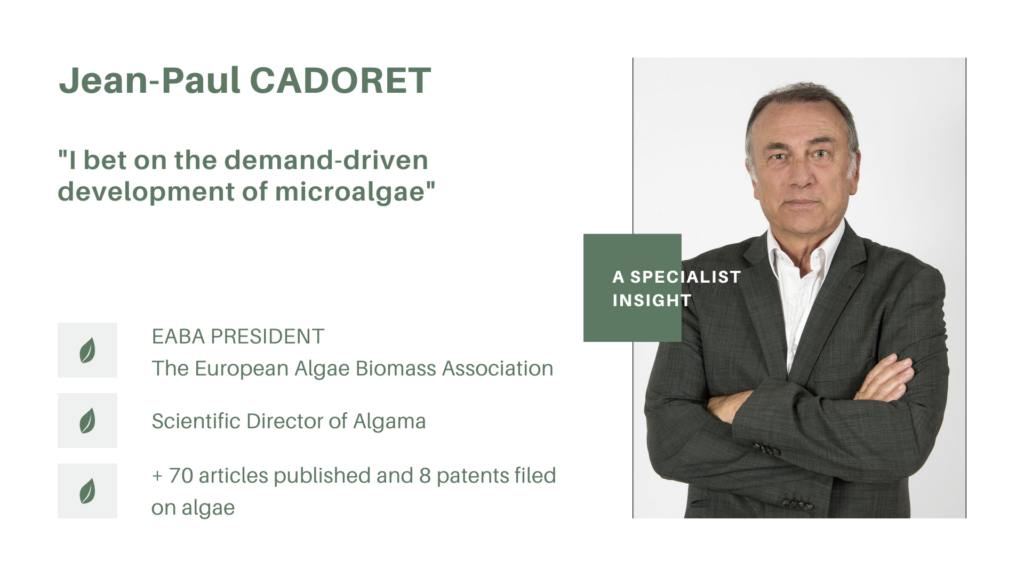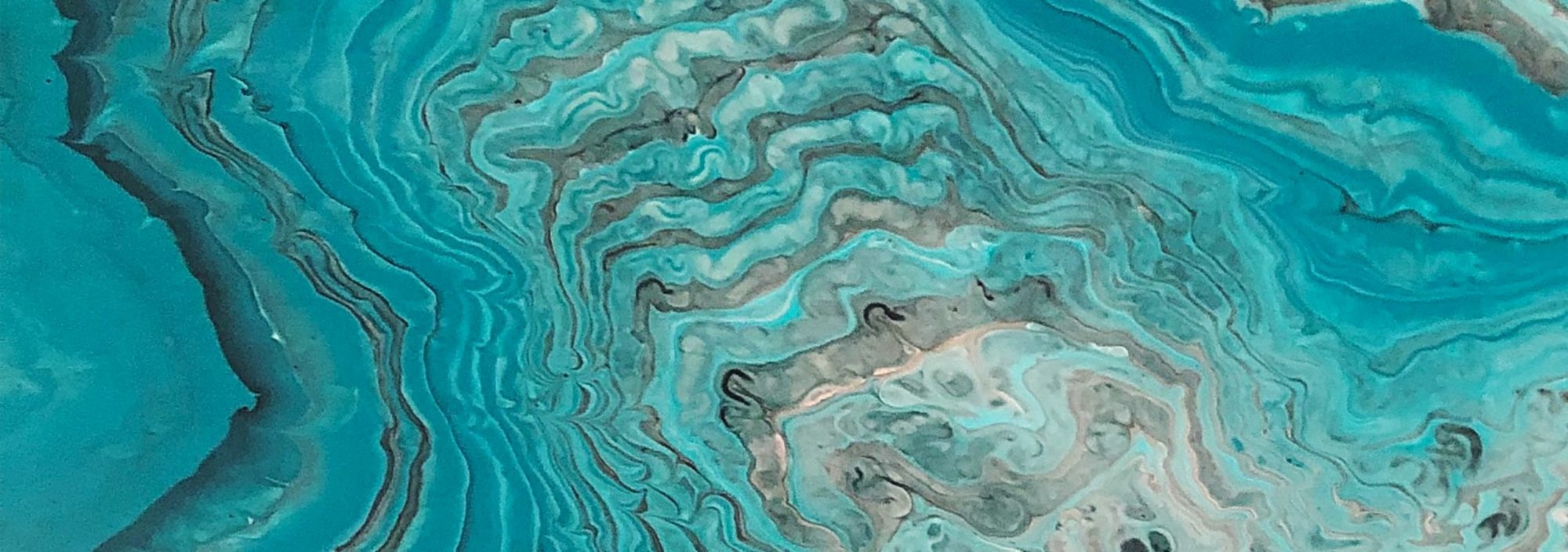

A specialist insight : Jean-Paul Cadoret “I bet on the microalgae development”
June 8, 2022
How can microalgae respond to environment and societal developments? What strength can Europe rely on to become the leader in this field? To find out all there is to know about the powers of microalgae, we met with one of the greatest experts on the topic, Jean-Paul Cadoret, President of the European Algae Biomass Association (EABA) of which Microphyt is a member.

What role do microalgae play in addressing the environmental and societal issues of global warming and food sovereignty?
A major advantage of microalgae is in its incredible biodiversity (>200,000 species). They offer a broad range of applications thanks to their unique characteristics and properties. Microalgae could be a natural source of vitamins, antioxidants, lipids, sugars, proteins, etc. their metabolism allows us to search for exactly what interests us, depending on the species.
We must, however, put this valuable resource into a European regulatory context, where the list of approved foodstuffs is restricted. Furthermore, the cost of microalgae production is higher than that of agricultural production. This is one of the reasons which prompted French and European microalgae professionals to focus on the added value of these microorganisms.
In environmental terms, their cultivation is sustainable. It doesn’t compete with agricultural land, nor depletes the sea or ocean from microalgae to cultivate them! All of the development stages of microalgae in photobioreactors, such as those at Microphyt, are monitored. As plants, they also enable the virtuous recycling of carbon. Certain wastewater treatment plants use microalgae downstream because they remove nitrogen and phosphorous from wastewater.
At present, the greatest application sectors are aquaculture, cosmetics, nutritional supplements and functional food.
Do microalgae have unique properties that aren’t found in other plants?
They are incredibly effective because, unlike terrestrial plants, they don’t lose any energy when they absorb water through their roots and irrigate their leaves. They have everything to hand as they are immersed in their nutritional environment. The following comparison speaks for itself: you obtain 1 gram of biomass per day for 1 m2 of plants cultivated in a temperate environment. In the same proportions, you harvest between 10 and 20 grams of biomass with microalgae. The yields are exceptional!
Another difference compared to terrestrial plants is that marine microalgae provide polyunsaturated fatty acids such as omega-3 and omega-6 as well as amino acid balances which are highly sought after in food. When used in cosmetics, microalgae can produce molecules which offer a high level of UV protection. Their antioxidant properties are also beneficial, for example for skin products.
What’s more, certain microalgae have unique pigments – molecules that cannot be found on land or in any terrestrial plants.
How do European microalgae producers compare with producers in other continents?
In a nutshell, Europe is very strong in microalgae fields, whereas Asia plays a prominent role when it comes to macroalgae.
In the United States, to place food on the market a declaration must be submitted to the Food and Drug Administration (FDA), which opens up a huge market to US producers.
European microalgae producers are smaller but there are many of them. As a whole, they focus on the high value-added products with an extensive research into the science and functionality behind these ingredients. The European Union has encouraged this trend by promoting collaboration with universities.
Today, our European administration contacts understand the power of microalgae, the jobs that they can create and their role in European independence, and discussions are very constructive. EABA outreach efforts have certainly helped with this!
Which obstacles need to be overcome to develop these natural solutions on a large scale?
One of the main obstacles is the complexity of the European machine. Laws need to be simplified. There is a great paradox between the Europe which supports microalgae projects and the Europe which promulgates laws that severely restrict their development. Europe wants to protect itself and its consumers, while encouraging research and industrialization.
Another major obstacle is consumer acceptance. Consumers need to realize that the incredible qualities of microalgae meet their expectations in terms of well-being, healthier diet, respect for the environment and sustainability. Microalgae are very often confused with pollutant species of algae. It’s our job to better promote the exceptional powers of microalgae.
From the technology perspective, I see no more obstacle. The European technological ecosystem adapts and responds very fast. It is creative, even pioneering. Not a month goes by without a new innovation regarding photobioreactor processes.
Looking ahead, I bet on the consumer demand-driven development of microalgae and the promotion of downstream processes, i.e. this incredible biomass which opens up numerous news areas of application.
Brief biography of Jean-Paul Cadoret
- Jean-Paul Cadoret is President of the European Algae Biomass Association, a key contact within the European Union.
- He is also scientific director of Algama, a supplier of microalgae-based food ingredients.
- This specialist has published over 70 articles on algae and filed 8 patents.




